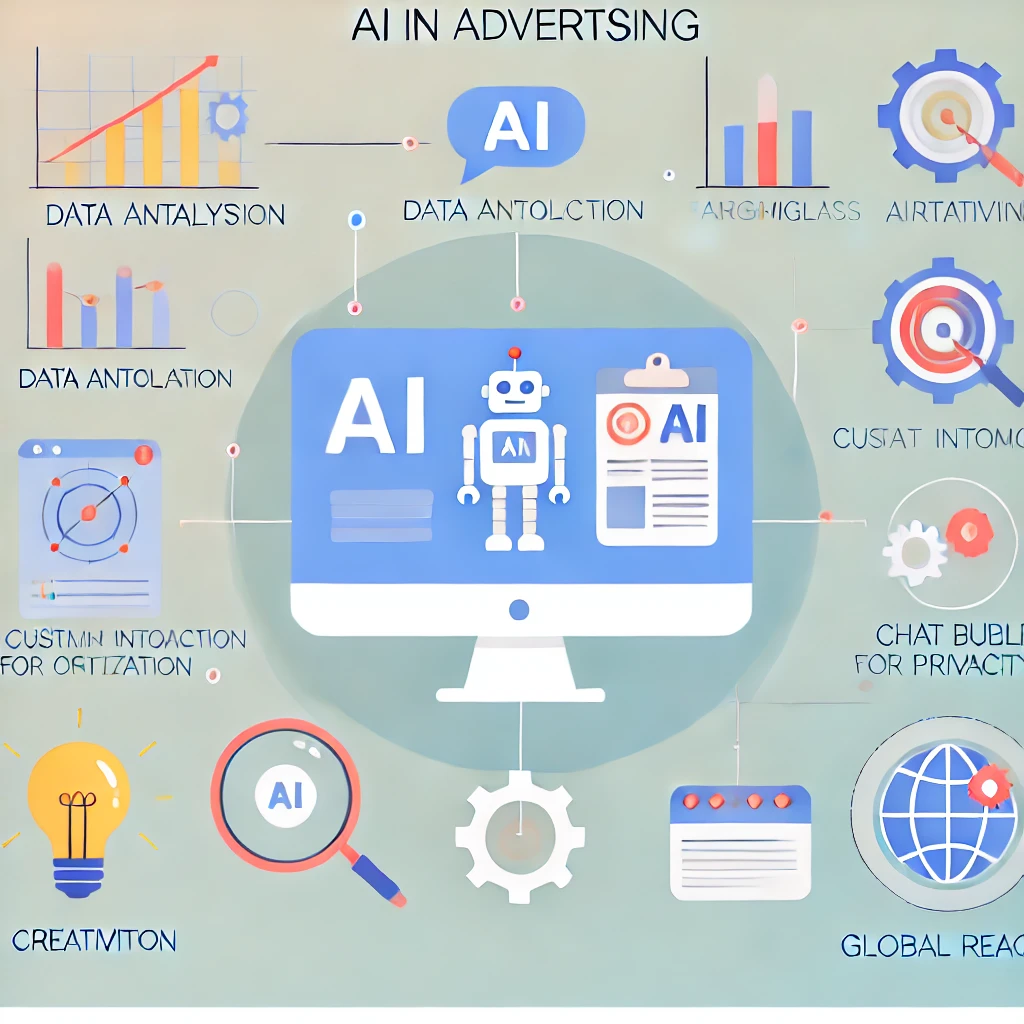The impact of AI on traditional advertising methods is a transformative force that marketer and brands can no longer ignore. As we delve deeper into an era defined by technological advancements, it becomes evident that artificial intelligence is reshaping the landscape of advertising. From personalized content to predictive analytics, AI offers unprecedented opportunities for businesses to engage with their audiences. In this article, we will explore how these innovations challenge conventional advertising approaches and what it means for the future of marketing.
Understanding the Evolution of Advertising

The world of advertising has undergone significant changes over the decades. Initially dominated by print media, traditional advertising methods have evolved alongside technological advancements. Today, the emergence of digital platforms and the rise of artificial intelligence (AI) are redefining how brands communicate with consumers.
In this section, we will explore the historical context of advertising and its evolution leading up to the present day, where AI plays a central role.
The Historical Context of Advertising
From posters to television commercials, advertising has always been about conveying a message to a target audience. The traditional methods relied heavily on broad reach and generalized messaging, often resulting in wasted efforts and resources. However, with the advent of technology, advertisers began to tap into data-driven strategies, analyzing consumer behavior to create more targeted campaigns.
The early days of online advertising marked the beginning of a shift towards personalization. Advertisers started to understand that knowing your audience is crucial for delivering relevant messages. This paved the way for the integration of data analytics and machine learning.
The Rise of Digital Advertising
As consumers migrated to digital platforms, traditional advertising methods struggled to keep pace. Digital advertising emerged as a powerful alternative, leveraging websites, social media, and email campaigns to reach audiences. However, even digital advertising faced challenges. With the abundance of information available online, consumers became increasingly adept at ignoring traditional ads.
This led to the development of programmatic advertising, where algorithms automate the buying and selling of ad space based on real-time data. Yet, despite these advancements, the question remained: how could marketers connect with consumers in a genuine way that goes beyond mere clicks?
Enter Artificial Intelligence
Artificial intelligence has emerged as a game-changer in the advertising landscape. By harnessing vast amounts of data, AI empowers marketers to generate insights that inform their strategies. From chatbots to recommendation engines, AI has transformed how brands interact with consumers, creating personalized experiences that resonate on a deeper level.
With AI, advertisers can analyze customer behavior, predict trends, and tailor messages to specific segments. This not only improves engagement but also optimizes ad spend by ensuring that each dollar is spent effectively. The impact of AI on traditional advertising methods is undeniable; it is revolutionizing how brands communicate while providing tangible results.
Personalization and Targeting: A New Era in Advertising

One of the most compelling aspects of AI’s impact on traditional advertising methods is its ability to personalize and target audiences with remarkable precision. Gone are the days of one-size-fits-all ads. Today’s consumers crave tailored experiences that meet their individual needs and preferences.
In this section, we will examine how AI enables personalization and targeting in advertising, exploring various techniques and technologies that contribute to this new era.
Dynamic Content Creation
AI has revolutionized content creation by allowing brands to produce dynamic advertisements that adapt to user behavior. By analyzing data from previous interactions, AI can craft personalized messages and visuals that resonate with individual users.
For instance, consider a travel agency that utilizes AI algorithms to analyze a user’s past searches and bookings. Based on this data, the agency can generate customized travel packages, complete with personalized recommendations for destinations, accommodations, and activities. This level of personalization makes the user feel valued and understood, enhancing their overall experience.
Predictive Analytics: Anticipating Consumer Needs
Predictive analytics is another area where AI excels, enabling marketers to anticipate consumer needs before they even arise. By analyzing historical data, AI systems can identify patterns and trends, allowing brands to stay ahead of the curve.
Imagine a retail brand that uses AI to evaluate seasonal trends and consumer purchasing behavior. By predicting which products are likely to be popular during certain times of the year, the brand can optimize its inventory and marketing strategies accordingly. This proactive approach minimizes waste and ensures that consumers find what they need when they need it.
Behavioral Targeting
Behavioral targeting is a powerful technique made possible through AI. By tracking user behavior across various online platforms, brands can deliver highly relevant advertisements to individuals based on their actions and interests.
For example, a user who frequently browses sports apparel websites may receive targeted ads for the latest athletic gear or promotions from local gyms. This strategic approach not only increases click-through rates but also enhances the likelihood of conversions as customers encounter products that align with their interests.
Ethical Considerations in Personalization
While personalization offers numerous benefits, it also raises ethical considerations. Consumers are becoming increasingly aware of data privacy and security concerns. Striking the right balance between personalization and respecting consumer privacy is essential for brands aiming to build trust with their audiences.
Brands must ensure transparency in data collection practices and provide users with options to customize their privacy settings. By prioritizing ethical practices, companies can leverage the impact of AI on traditional advertising methods responsibly while maintaining a positive relationship with consumers.
Changing Advertising Strategies: The Role of Automation
As AI continues to evolve, it brings forth automation that fundamentally alters traditional advertising strategies. Automation streamlines processes, reduces human error, and allows marketers to focus on higher-level decision-making.
In this section, we will explore how AI-driven automation is changing the landscape of advertising and what this means for marketers.
Automating Ad Campaigns
AI empowers marketers to automate various aspects of their advertising campaigns, including ad placements, bidding strategies, and performance analysis. Automated tools can analyze data in real time, adjusting bids and placements to maximize visibility and engagement.
Consider a scenario where a brand launches a new product. Instead of manually monitoring ad performance, AI tools can track metrics such as impressions, clicks, and conversions, making instant adjustments to optimize the campaign’s effectiveness. This level of automation saves time and resources while ensuring that ads are consistently reaching the right audience.
Streamlined Reporting and Insights
Traditional advertising methods often involve tedious reporting processes, requiring marketers to sift through vast amounts of data. AI changes this narrative by providing streamlined reporting and actionable insights.
Marketers can utilize AI-powered dashboards that aggregate data from various channels, offering a comprehensive overview of campaign performance. By consolidating information, brands can quickly identify trends and make informed decisions based on real-time feedback.
Enhancing Creativity Through AI
While some might argue that automation stifles creativity, AI can actually enhance it. By taking over repetitive tasks and data analysis, AI frees marketers to focus on creative strategies and innovative ideas.
For instance, AI algorithms can analyze successful ad campaigns and suggest themes or concepts that resonate with target audiences. Marketers can use these insights as inspiration for developing fresh, impactful creative strategies that drive engagement.
Challenges and Limitations of Automation
Despite the many benefits of AI-driven automation, there are challenges to consider. Over-reliance on automated tools may lead to a lack of human touch in advertising campaigns. Authenticity and emotional connection remain vital elements in building brand loyalty, and brands must balance automation with human insight.
Moreover, AI is only as good as the data it receives. Inaccurate or biased data can lead to flawed marketing strategies. Brands must ensure they implement robust data management practices to maintain the integrity of their automated systems.
The Future of Advertising: Integrating AI with Human Touch
As we look ahead, it is clear that the future of advertising lies in striking a harmonious balance between AI and human creativity. While AI technologies offer tremendous capabilities, the human element remains irreplaceable in crafting compelling narratives and connecting with audiences on an emotional level.
In this section, we will explore how brands can integrate AI with human touch to forge deeper connections with consumers.
Emphasizing Storytelling
Storytelling has long been a cornerstone of effective advertising. While AI can help identify trends and consumer preferences, it is the human storyteller who breathes life into the narrative. Brands should leverage AI insights to inform their storytelling while ensuring that the core message resonates with the audience on an emotional level.
For example, a nonprofit organization aiming to raise awareness for a cause can use AI data to identify target demographics. However, the campaign’s success ultimately hinges on the personal stories shared by beneficiaries, demonstrating the power of authentic storytelling in driving engagement.
Fostering Authentic Connections
Consumers today value authenticity and transparency in the brands they support. AI can assist in identifying micro-influencers and brand advocates who genuinely align with a brand’s values. Collaborating with these individuals allows brands to create campaigns that feel relatable and grounded in real-world experiences.
By integrating AI with human touch points, brands can build communities centered around shared values and foster lasting relationships with their audiences.
Continuous Learning and Adaptation
The advertising landscape is constantly evolving, and brands must embrace a culture of continuous learning and adaptation. AI provides valuable insights into consumer behavior and market trends, but it is up to marketers to interpret this data meaningfully.
Brands should encourage teams to experiment with new ideas and approaches, utilizing AI as a tool for informed decision-making. By combining data-driven insights with creative exploration, brands can remain agile and responsive to ever-changing consumer needs.
Conclusion: Embracing the Impact of AI on Traditional Advertising Methods
The impact of AI on traditional advertising methods is profound and far-reaching. As AI technologies continue to advance, they reshape how brands connect with consumers, pushing the boundaries of personalized experiences. By embracing the potential of AI while maintaining the human touch, marketers can create impactful campaigns that resonate with their audiences.
As we navigate this new advertising landscape, it is essential for brands to strike the right balance between automation and creativity. Those who master this balance will emerge as leaders in the industry, benefiting from innovative strategies that enhance engagement, drive conversions, and foster lasting connections.
Video
FAQs
What is the primary impact of AI on advertising?
AI enhances personalization, targeting, and automation within advertising, allowing brands to create tailored experiences that resonate with consumers while optimizing their marketing efforts.
How does AI improve targeting in advertising?
AI analyzes vast amounts of consumer data to identify patterns and preferences, enabling brands to deliver highly relevant advertisements based on individual behavior and interests.
Are there risks associated with using AI in advertising?
Yes, over-reliance on AI can lead to a lack of human touch in campaigns. Additionally, inaccurate or biased data can result in flawed marketing strategies.
Can AI replace human creativity in advertising?
While AI enhances efficiency and data analysis, human creativity is essential for crafting authentic narratives and emotional connections with audiences.
How can brands strike a balance between AI and human touch in advertising?
Brands should leverage AI insights to inform their strategies while emphasizing storytelling and fostering genuine connections with their audiences to maintain authenticity.

Leave a Reply